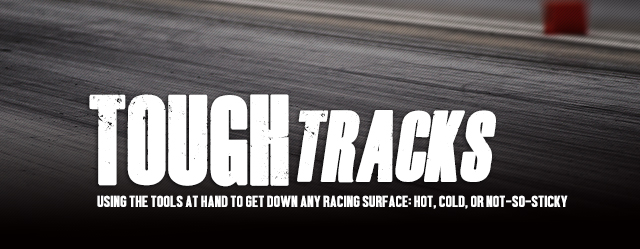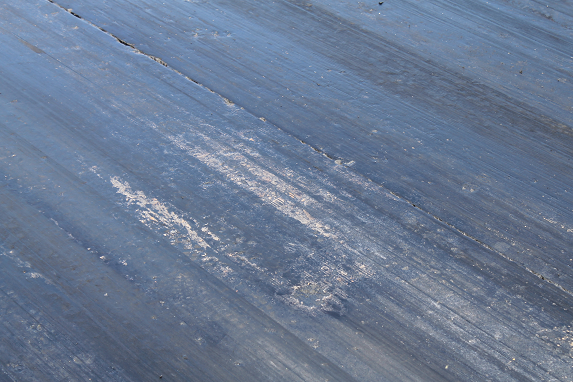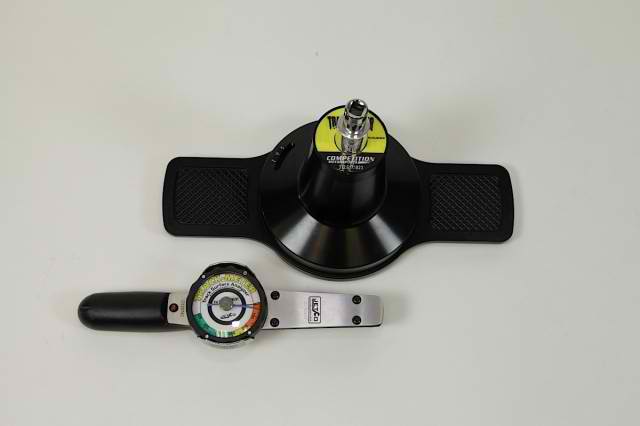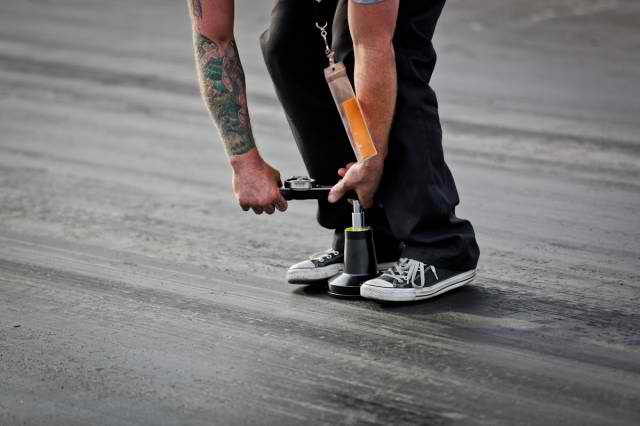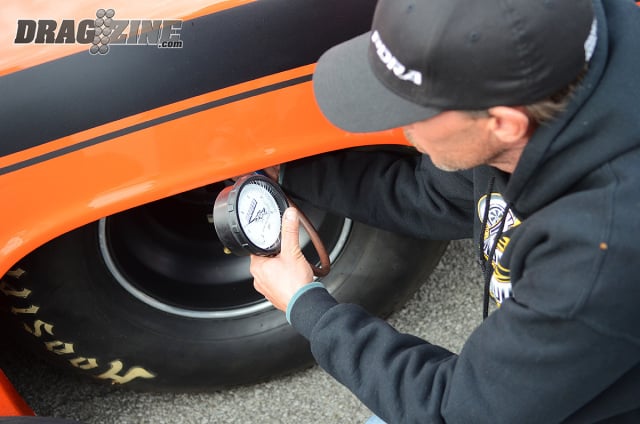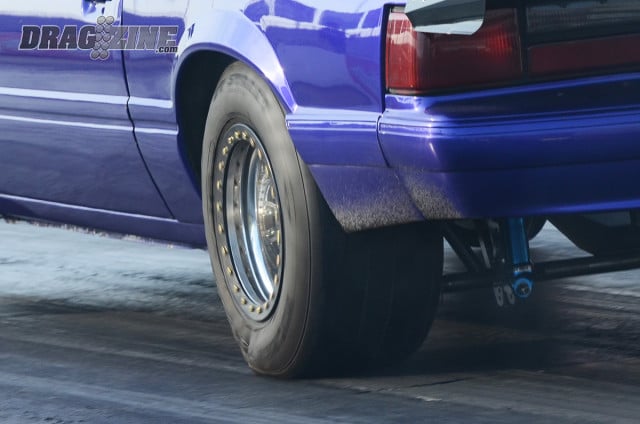Drag strips dot the landscape of the United States — North to South and East to West. Most drag racers can get to a drag strip within a couple hours drive. But is the nearest strip offering track conditions suitable to lay down some solid numbers, and do it consistently? The truth is, going out and winning the race, and setting records or personal bests is what it’s all about, and it helps alleviate the insanity of how much this sport can affect all other facets of life. There are superb race tracks across the country that provide these opportunities every weekend. Then there are those either affected by weather conditions or just plain bad tracks, where just getting down the center of the lane and making it to the next round can be an accomplishment.
Many variables cannot be controlled by the racer, which invariably will have an impact of the weekends outcome; from a bright and hot sunny day causing the track to boil, the ever-dreaded bald spot on the starting line, or a poorly maintained racing surface. One thing is certain though – with favorable or horrendous track conditions, two cars will face each other and only one will take the victory and advance forward. To help with the latter, we have enlisted some of the best in the business, including Phil Mandella of PMR Race Cars, Ron Galbreath of Santhuff’s Suspension Specialties, and noted tuner Will Hanna of Hanna Motorsport Services to lay out a solid playbook for getting down the toughest of tracks in the worst conditions.
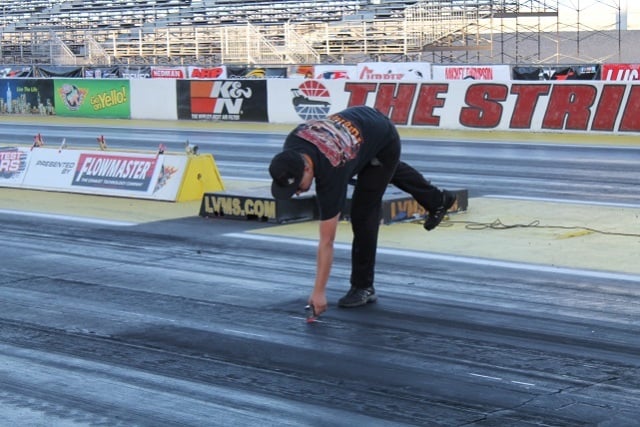
Taking accurate track temperature readings, along with a thorough visual inspection of the race track’s surface, are an important tuning tool for sportsman and professional racers. Track temp is a window into the overall condition of the racing surface, and a foundation to build a tuning strategy.
Reading A Lane
Before making changes to your race car, you have to know what you’re adjusting for, and that’s current track conditions. Many factors affect track conditions: weather, the time of day, the intensity and angle of the sun, the base track surface, and the effort and processes put into track prep. A good place to start your analysis of the track conditions is by reading the track temperature, or the temperature reading of the top layer of rubber where the rear tires will sit on the starting line. More often than not, the hotter the track gets, the more getting traction becomes an issue.
When track temperatures begin to exceed 110 degrees Fahrenheit, the rubber on top of the track’s surface starts getting soft, and the hotter it gets, the softer it will become until it starts to release itself. Getting your car hooked up to the top layer of the race track isn’t always enough — overpowering the track can also consist of ripping the rubber right off the surface.
It’s hard to beat experience when reading a race track: condition of the surface layer of rubber, the tracks' paved or poured finish, width of the groove and where it moves down track (don’t expect it to be straight), and the best place to put the rear tires on the starting line. If you lack experience, don’t be afraid to go up to the line and watch what others are doing, ask them what they're looking for, soak it all in and practice for yourself.
This brings us to our second test of the race track: rubber adhesion. The way the rubber sticks to the track’s surface is critical (as that’s what we race on!). Get out and walk the track: look for bald spots, rubber peeling or thinning, and do a thorough visual inspection to see what you have to navigate. To go a step further, Competition Motorsports can step your track evaluating tool box up a notch with the Track Meter.
The Track Meter is a tool devised to take the guess work out of reading the grip the racetrack has to offer. The straight forward tool incorporates a rubber pad that’s pressed onto the racetrack with a constant spring force creating bite. Turning the handle with the incorporated torque wrench shows the peak force required to rotate the rubber pad on the tracks surface, giving an indicator of how well a rubber slick will adhere during launch and throughout the run. Getting scientific about a track’s condition, and recording these readings into a log book will make navigating a tough track that much easier.
The Track Meter is a torque wrench for the race track, allowing the crew chief to better assess the track right before his car goes down it or at points throughout the event.
“Something has to spin: the tires have to spin, the converter has to spin (or the clutch needs to slip), or the engine is not going to spin, something has to spin to keep the engine from going flat. – Ron Galbreath
Professional drag racing tuning consultant and crew chief Will Hanna of Hanna Motorsport Services, brings his years of experience with him to the starting line, to make that final call.
“Sometimes, lining up outside of the groove is a pay-me-now-or-pay-me-later type of deal,” he says. “It really depends on how sensitive your combination is. I’ve had combinations where I was far more concerned about striking the tires in a bald spot than I was down track. There have also been some tracks where the groove is so narrow, that if I lined up left or right of the bald spot, I was going to be in trouble downtrack. I usually start in the middle of the groove as my target (for the center of the car). I notice the starting line and the tendency of the lane to shift left or right and make any adjustments needed. Generally, aiming for the center of the groove down track is your safest bet.”
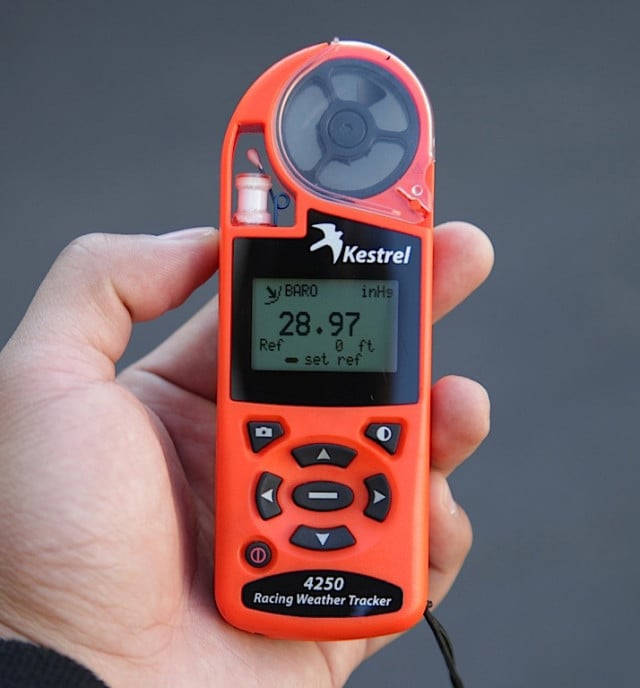
No race car has the same power potential at 5000’ DA and 100*, as at sea level and 60*. So far controlling the weather is out of grasp, so do the next best thing; monitor, interpret, and account for the changes seen throughout the duration of the race. A simple weather monitoring unit like a Kestrel 4250 or an advanced Computech 1000 Pro ET weather station will yield invaluable tuning data.
Changes In The Weather
Current weather conditions have a large effect on the racing surface you’re stuck with for the weekend, but weather also has a noticeable effect on your race car. Horsepower is greatly affected by changing weather conditions, which in turn will change the way the clutch or converter acts, as well as the rest of the car. Getting an accurate reading and recording it for future review is a necessity — you have to tune for the track and for the weather, managing power applied to the wheels is key.
Loosen It Up
Don’t be afraid to loosen up the chassis, there are extremes that won’t work, but poor conditions usually require a faster-moving suspension to gain traction and bite. Renowned west coast chassis builder, Phil Mandella will loosen up the suspension and move weight to combat a bad track.
“On a hot track, start by loosening the shocks front and rear to get the tire planted and hooked. When the track is really bad, don’t be afraid of having the shock extension at both ends of the car full-loose (on slicks). To help the loose shocks work, also move weight from the front of the car to the rear. The worse the track gets, the more weight you’re going to want to move rearwards.”
The answer is weight and shock settings if you have both tools available. How much to change will depend on the amount of horsepower you’re working with. Having enough power to flip the car over backwards might keep one away from full-loose shock settings.
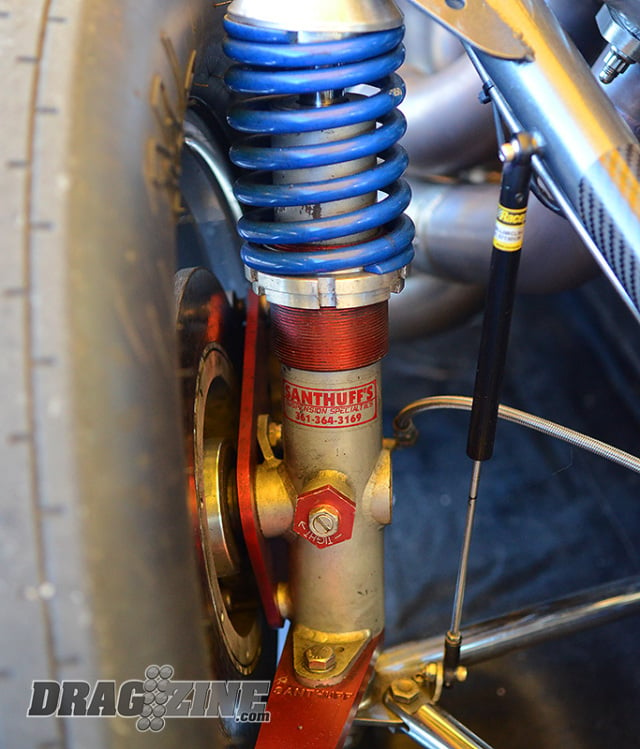
Making a shock adjustment is as easy as turning a knob. How much and which way to go with those knobs is much trickier. Santhuff provides a baseline setup sheet to get you started and offers technical support to help dial in your settings.
When dealing with faster cars and wider tires (and dead-hook-required drag radials), high end shock builder Galbreath believes it’s all in a balanced approach to chassis rotation and weight transfer.
“I like to have it where the front suspension has to help the nose come up, so the torque of the car can’t over-rotate and stand the car up over center. The whole deal is weight and balance.”
With the suspension reacting to the track, engine power has to be transferred to the surface through the rear tires. Tire pressure plays an undervalued role managing traction on any track, especially a hot one. Most racers already run tire pressure lower than it needs to be to cover up suspension setup issues. This low air pressure situation will allow the sidewall of the tire to absorb the shock and bounce of a rear suspension that’s setup wrong.
“I usually like to increase tire pressure by a small amount with slicks to add traction,” says Mandella.” Most guys, in my opinion, run their tire pressure too low to start with. Running lower tire pressure cups the tire more when it wraps up on launch — this takes rubber off the track and makes the tires’ footprint smaller. Increasing tire pressure will put more rubber on the ground making for better traction and a more stable tire.”
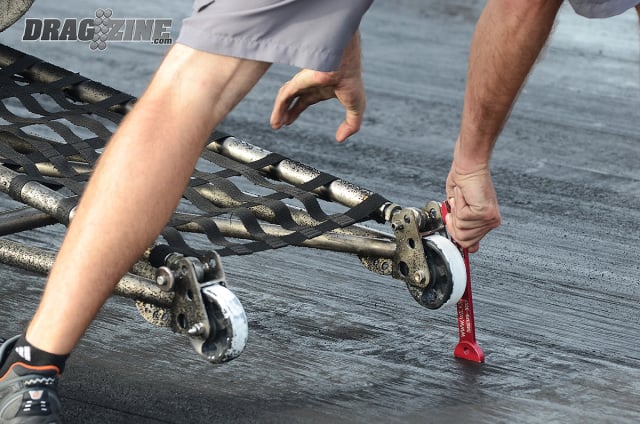
Wheelie bar height can have a dramatic effect on the attitude of a race car. Keeping the tire planted just enough to retain traction without giving it full bite and shaking the doors off.
Power Management
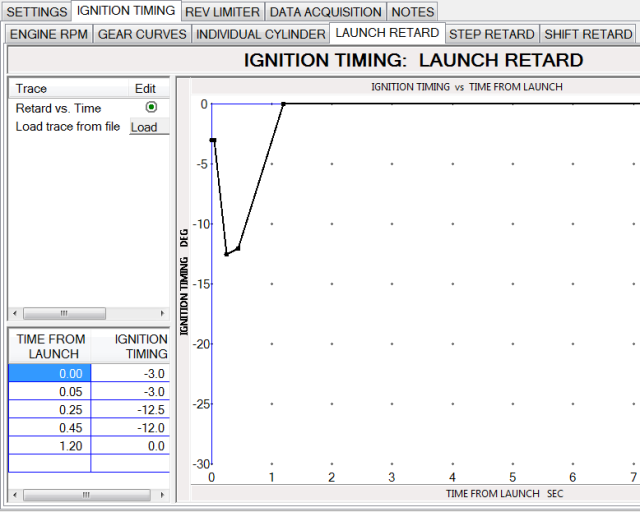
Adding and removing timing is one of the fastest and most responsive ways to manage an engines power. Using an MSD Ignition 7730 Power Grid System to control timing is simple and effective, the above run is from a centrifugal supercharged 275 radial tire car running the quarter mile in 7.40 seconds at 190mph.
Getting the power to the ground isn’t always about suspension action, as applying the right amount of power is just as critical. With all of the gadgets of the twenty-first century, racers might as well get used to the idea of a computer in their racecar. An MSD programmable ignition timing controller (or similar tool that can manipulate engine timing) is a powerful accessory in the right hands, and is still useful when just “winging it”. Pulling timing is a surefire way to get down a deteriorating track — a point Mandella agrees with.
“With these new ignitions, taking timing out and ramping it back in is a real good way to go. Taking out some timing right at the hit will calm the car down enough to make it a ways downtrack where the timing and power can be put back to work. With today’s high-horsepower cars, timing control can be more important than moving weight or changing suspension settings.”
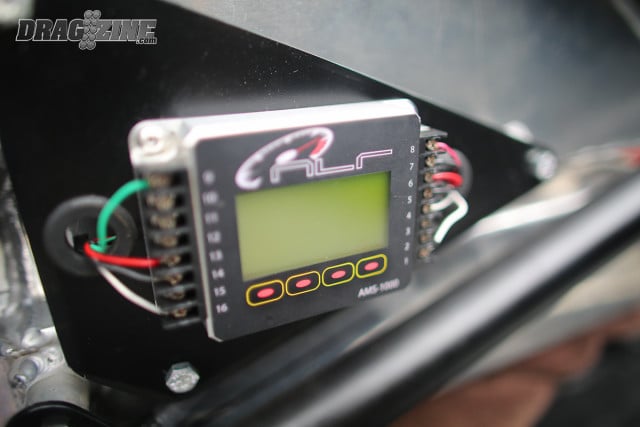 Power adder cars have a few more options when it comes to power management, as a wider swing in horsepower means more power to control and the ability to add it in further down the length of the racetrack while still posting up a respectable elapsed time. Turbocharged cars can manipulate boost pressure settings with a programmable boost controller along with engine timing manipulation. Some limited tire cars on bad tracks have been known to be adding boost and power all the way through and beyond the eighth-mile.
Power adder cars have a few more options when it comes to power management, as a wider swing in horsepower means more power to control and the ability to add it in further down the length of the racetrack while still posting up a respectable elapsed time. Turbocharged cars can manipulate boost pressure settings with a programmable boost controller along with engine timing manipulation. Some limited tire cars on bad tracks have been known to be adding boost and power all the way through and beyond the eighth-mile.
Nitrous cars have any number of ways to control their engines’ acceleration rates. They can utilize multiple nitrous kits that turn on at preset time intervals, to run progressive nitrous controllers that pulse the kit, making it seem smaller until commanded to be on 100% flow, which creates an overly rich condition at launch to kill horsepower while leaning it out until the proper air/fuel ratio is attained down-track. And like most engines with without a power adder, manipulating timing works very well.
At the end of the day, getting down the track quick is about applying the right amount of power for as long as possible, not having more power than the next guy.
But what if you don’t have an ignition timing controller, boost controller, or nitrous controller? No sweat, as the old fashion ways can still get the job done. Richening up the fuel system a few percent can take the snap out of the natural acceleration rate of the engine and calm it down on the starting line. Hanna uses all techniques available at his disposal.
“If you’re trying to deal with a bald spot or bad starting line, there are a few ways to attack it. The most common is to take more timing out at the hit — 0.0 seconds on most graphs. Some people don’t really like to play the timing game, so they will richen the barrel valve a few flats to lower the exhaust gas temperature average at the starting line for a calmer motor. In some instances you could drop the launch rpm, but that really doesn’t do as much as you would think it would do.”
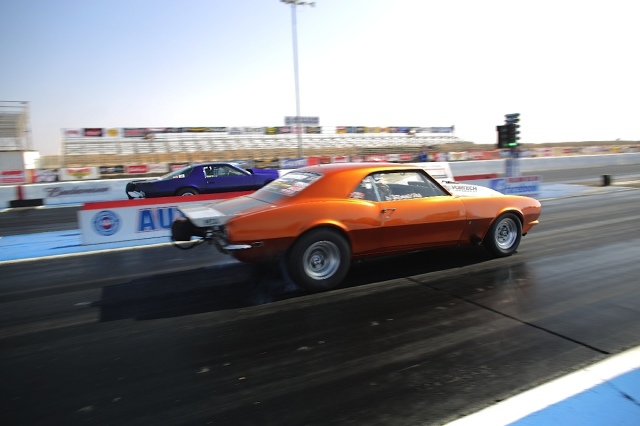
Team Afromaro Racing’s DJ Reid tried to put all the power down against rival Kevin Young in Round 1 Eliminations of the NMCA West 275 Finals in Bakersfield, CA. The track decided “all the power” at that point in time was not a possibility and rewarded Reid with a second burnout, ending his weekend ahead of schedule.
If that isn’t enough methods to control the power applied to the wheels, don’t forget the coupling device in the middle of the car — the ever-important torque converter or clutch.
Do You Keep A Logbook?
The best way to start your day on a tough track is to look at old run data and build a strategy based on past success and failure. Using a simple logbook or professional tracking software is always better than trying to pull from memory. Being diligent about entering all of your run data will go a long way to making you a faster and more consistent racer.
“A loose converter can get down a hot track easier, the looser the converter is; the more forgiving the car is going to be going down the race track. A converter that’s really too loose for the car will get it from A to B, but sacrifice some elapsed time in good conditions. Once the car is lined out or on a better track you’ll need a tighter converter.
“This is why so many racers have multiple converters. Something has to spin: the tires have to spin, the converter has to spin (or the clutch needs to slip), or the engine is not going to spin; something has to spin to keep the engine from going flat. A lazy engine will not load the chassis properly and cause tire spin or shake issues downtrack when power is finally applied.”
Slicks Vs. Drag Radials
Which ever tire you decide to run, a tough track is a tough track. A slick-type tire is going to be more forgiving on a less-than-ideal surface every time. The softer sidewall and bigger footprint on launch helps to grab the track surface and get moving. A slick will also typically require a much wider swing in suspension adjustments (from real tight to real loose) and not as much change in power application. The slick will tolerate some excess wheel speed (controlled spinning) and still keep on going right down the middle.
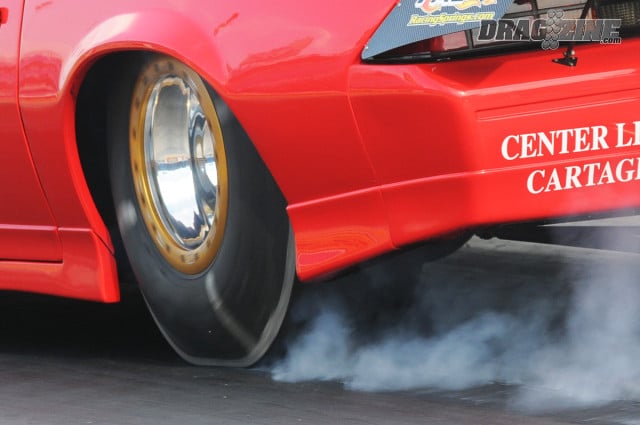 A radial, meanwhile, has many strong qualities; a bulletproof sidewall, long life, and they just plain work amazingly well when everything goes as planned, but that hot track will come up and bite you if you aren’t careful. The stiff sidewall makes for some blazing fast passes with the power in early, but that same stiff sidewall is not at all forgiving when the launch is too aggressive. A radial tire will tolerate virtually zero wheel speed on a tough track. If it starts to spin even a slight amount, it’s all over and it’s time to pedal or lift completely.
A radial, meanwhile, has many strong qualities; a bulletproof sidewall, long life, and they just plain work amazingly well when everything goes as planned, but that hot track will come up and bite you if you aren’t careful. The stiff sidewall makes for some blazing fast passes with the power in early, but that same stiff sidewall is not at all forgiving when the launch is too aggressive. A radial tire will tolerate virtually zero wheel speed on a tough track. If it starts to spin even a slight amount, it’s all over and it’s time to pedal or lift completely.
The suspension tuning window with a radial tire is much narrower — full-loose on shock extension can equal a car that spins one pass and drags the rear bumper on the next. A more moderate approach to loosening up the chassis coupled with most of the work being done with a reduction in engine acceleration through power management, is a surefire way to tackle a tough track.
Success Is Putting It All Together
Making the race car accelerate on a hot track is getting all facets of the car working in harmony on the edge of disaster. Everything is important; properly reading the race track and your opponent, adjusting the chassis and shocks, and dialing-in the power put to the rear wheels. Take your time and evaluate all factors that will change the dynamics of your race car. Review your logbook and see what has and hasn’t worked in the past. Don’t have a logbook? Get one!
The car that pulls into the waterbox with the hottest tune up isn’t the car that wins every round. The car that comes to the starting line with the proper tune for the conditions is the one to bet on. Don’t get caught up in being the fastest down the race track; get caught up in taking home the win. However you get there, it’s what matters.



